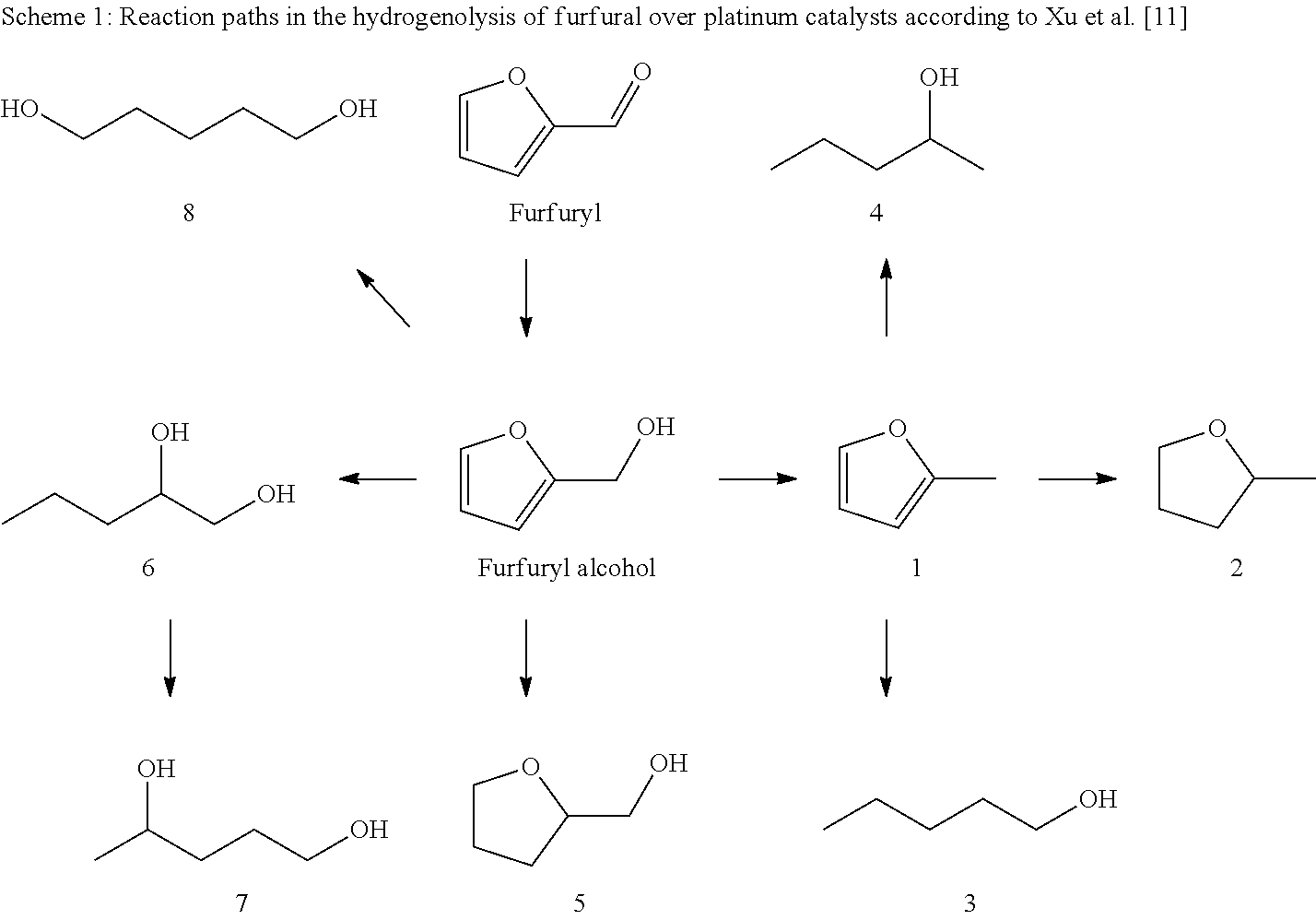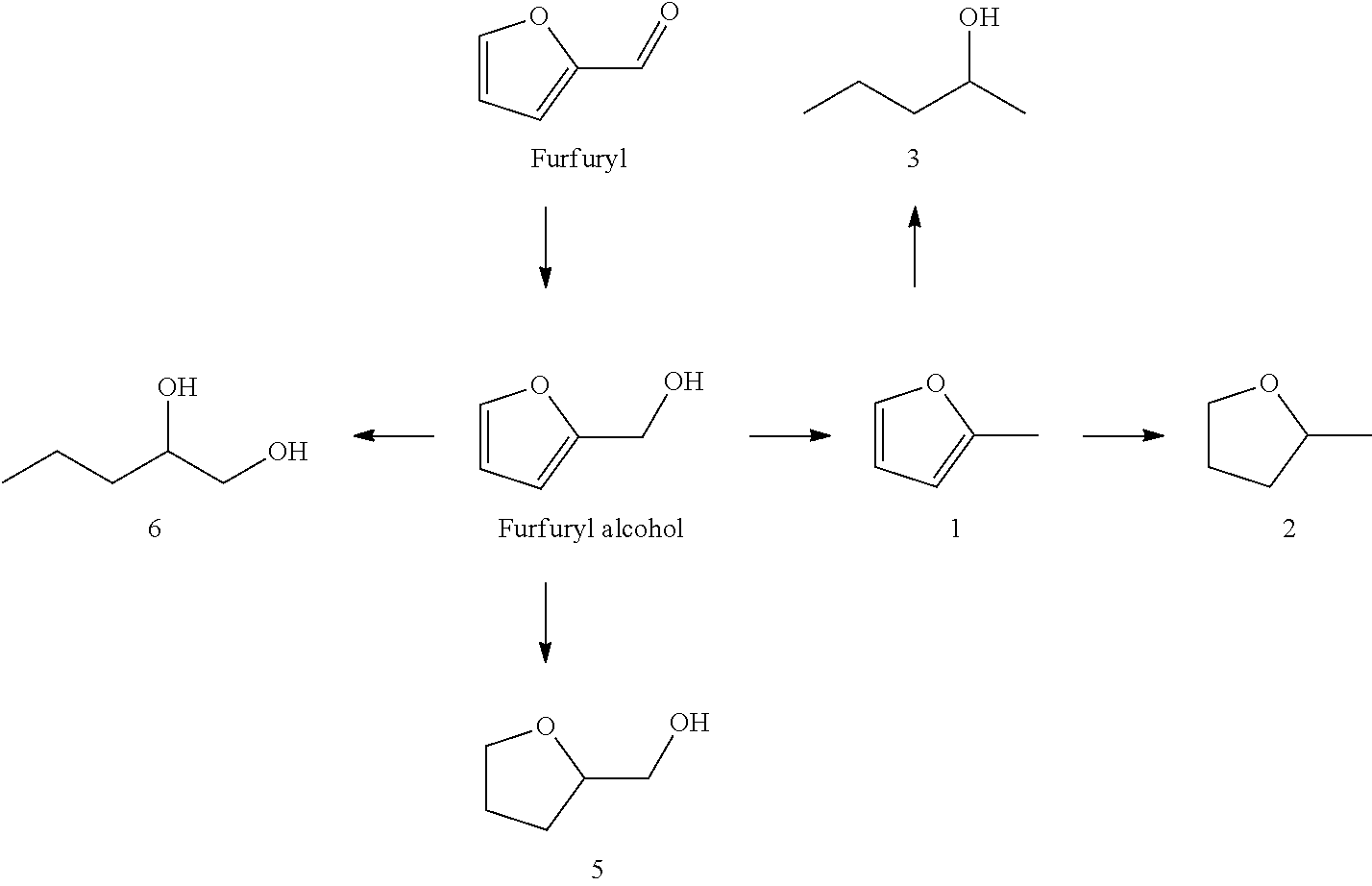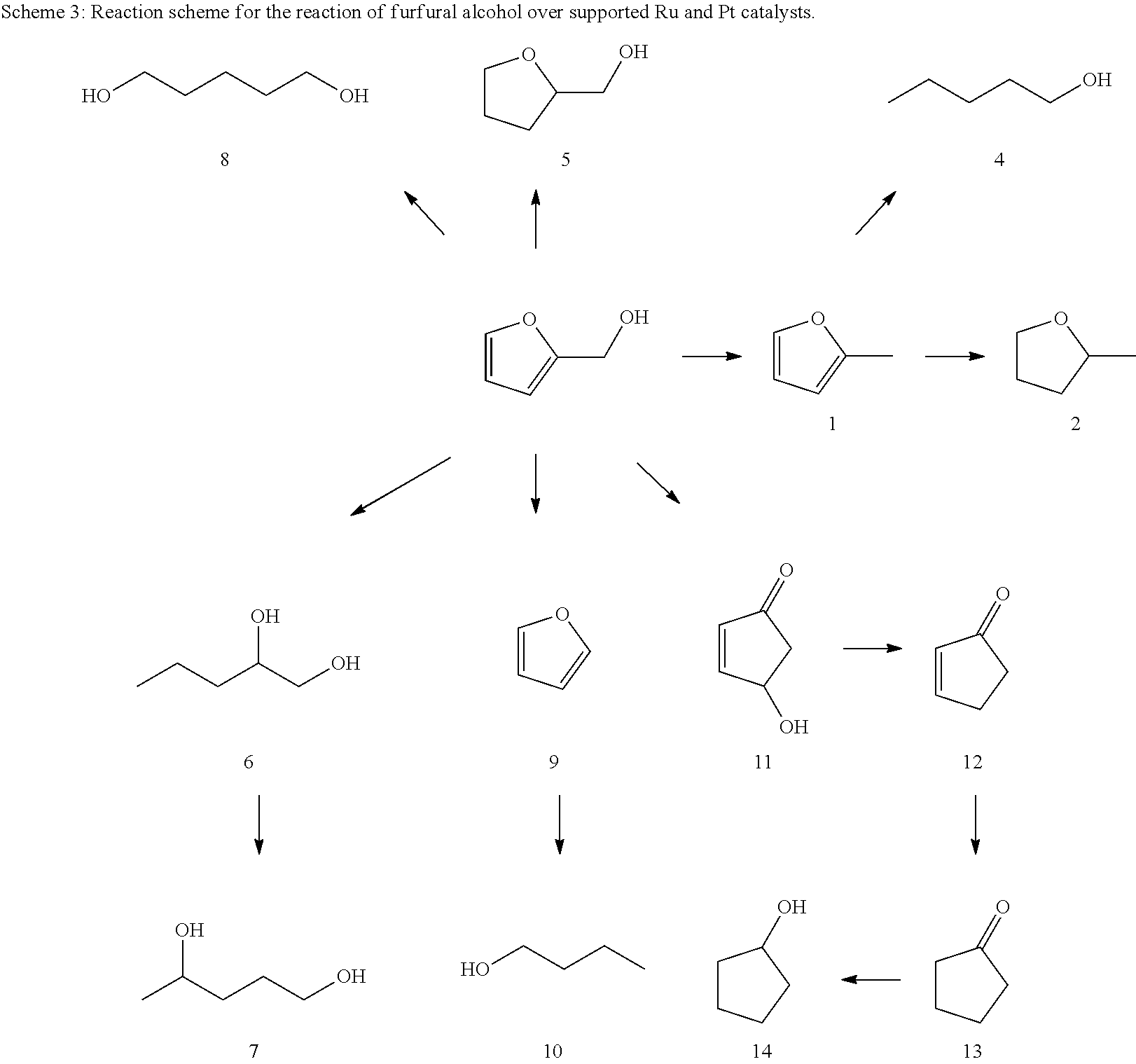Hydrogenolysis of furfuryl alcohol to 1,2-pentanediol
- Summary
- Abstract
- Description
- Claims
- Application Information
AI Technical Summary
Benefits of technology
Problems solved by technology
Method used
Image
Examples
examples
1. Chemicals Used
[0162]The following chemicals were used:
Furfuryl alcohol (Sigma Aldrich, ≧98%)
Solvents:
[0163]1,4-Dioxane (Merck, ≧99%), acetic acid (Sigma Aldrich, ≧99.5%), ethanol (Roth, ≧99.8%), THF (Sigma Aldrich, ≧99.9%), water (VWR, HiPerSolv CHROMANORM).
Acids and bases:
Sodium acetate (F. Klasovsky, ACS grade), sodium carbonate (Sigma Aldrich, ≧99.5%), 2N hydrochloric acid (Roth).
Metal precursor compounds:
Copper(II) nitrate trihydrate (Merck, ≧99.5%), nickel(II) nitrate hexahydrate (Aldrich, 99.999%), tetraammineplatinum(II) nitrate (Alfa Aesar, 99.99%), zinc nitrate hexahydrate
(Sigma Aldrich, 98%), tin(II) chloride (Alfa Aesar, ≧99%).
For calibration of GC and GC-MS:
1,2-Butanediol (Fluka, ≧98%), cyclopentanol (Aldrich, 99%), cyclopentanone (Sigma Aldrich, ≧99%), 1,2-hexanediol (Aldrich, 98%), 2-methylfuran (Aldrich, 99%), 1-pentanol
(Sigma Aldrich, ≧99%), 1,2-pentanediol (Aldrich, 96%), 1,5-pentanediol (Fluka, ≧97%), tetrahydrofurfuryl alcohol (Fluka, ≧98%).
Ionic liquids:
1-Buty...
examples 1-3
2. Examples 1-3
3*: Preparation of 1,2-pentanediol using an Ru / Al7O3 catalyst (according to the invention
[0218]The reaction was carried out in a stirring autoclave (Parr Instruments) made of stainless steel and having a capacity of 300 ml. A 500 ml gas tank was connected to the reactor via a pressure reducer and could be supplied via a gas feed line system both with argon (≦80 bar) and with hydrogen (≦200 bar). An offgas valve served to depressurize the reactor after the end of the experiment. A gas introduction stirrer with a maximum stirring speed of 1600 rpm was used for mixing. A thermostat-controlled heating jacket by means of which temperatures up to 280° C. could be set served for heating the reaction mixture. Samples could be taken via an offtake tap during the reaction. Furthermore, a supply tank to which hydrogen and argon could likewise be introduced from the gas tank was connected to the reactor for the introduction of the starting material. The pressure was measured by m...
examples 4-8
According to the Invention
[0222]It was surprisingly determined that the selectivity could be increased further when the hydrogenolysis was carried out with addition of small amounts of saturated Na2CO3 solution or solid Na2CO3.
[0223]Specifically, 86.8 ml of water, 0.5 g of the 5% Ru / Al2O3 catalyst A11 and the amount indicated in Table 13 of Na2CO3 (0 mg, 10 mg, 30 mg, 60 mg, 300 mg) were placed in the autoclave. The reaction apparatus was closed and a stirring speed of 1000 rpm was set. The reactor was flushed three times with 10 bar of argon and once with 10 bar of hydrogen. The hydrogen pressure was subsequently set so that the pressure expected on reaching the reaction temperature would be 10-20 bar below the reaction pressure of 100 bar. The contents of the reactor were heated to the reaction temperature over a period of 30-60 minutes. The reaction temperature was 240° C. As soon as this had been reached, 7.46 of furfuryl alcohol in 6.6 ml of water were quickly introduced via th...
PUM
| Property | Measurement | Unit |
|---|---|---|
| Temperature | aaaaa | aaaaa |
| Temperature | aaaaa | aaaaa |
| Percent by mass | aaaaa | aaaaa |
Abstract
Description
Claims
Application Information
 Login to View More
Login to View More - R&D
- Intellectual Property
- Life Sciences
- Materials
- Tech Scout
- Unparalleled Data Quality
- Higher Quality Content
- 60% Fewer Hallucinations
Browse by: Latest US Patents, China's latest patents, Technical Efficacy Thesaurus, Application Domain, Technology Topic, Popular Technical Reports.
© 2025 PatSnap. All rights reserved.Legal|Privacy policy|Modern Slavery Act Transparency Statement|Sitemap|About US| Contact US: help@patsnap.com



